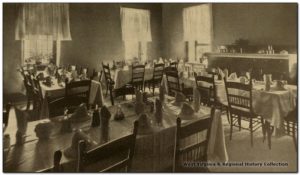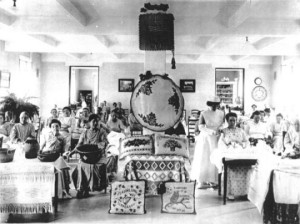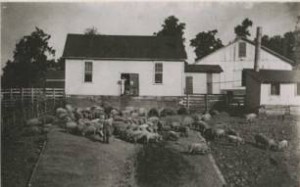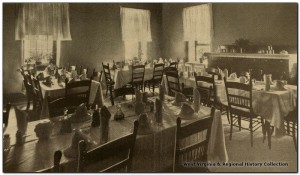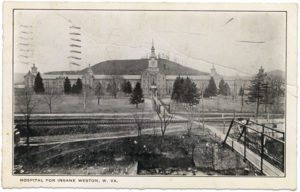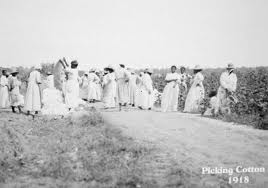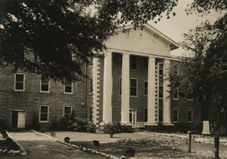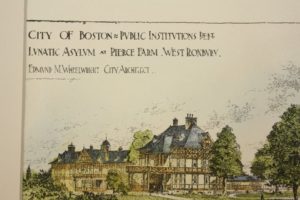The federal government had sought to integrate, or assimilate, Native Americans into the larger white culture for some time before the Canton Asylum opened. Policy-makers did not try to achieve this goal by meeting Native Americans halfway or by gradually introducing them to white values. Instead, their programs tended toward an immersion experience. Children were forced to attend boarding schools where staff tried to cut all ties to their previous cultural experience so they could more easily adopt the white way of life. Continue reading
Tag Archives: West Virginia Hospital for the Insane
And the Patients’ Side
Employees at the Canton Asylum for Insane Indians had clear instructions concerning their duties, including the all-important attendants who were at the heart of patient care. (See last post.) They were charged with keeping rooms neat and clean, attending to their patients’ needs in terms of clothing and personal care–basically what anyone would expect of an institution set up to care for the insane. The reality was often different, and the conditions many patients lived under would have been disheartening.
Though foreign to their own experience on or off a reservation, patients arriving at Canton Asylum when it first opened would have walked into a spacious, light-filled building. Electricity and running water might have been exciting to use, and regular meals supplemented by garden produce would have been tasty and welcome. As the asylum deteriorated over the years, however, patient comfort declined. The early structure had been pretty and airy, with pictures on the walls and nice furniture. As time went on, the pictures disappeared; the floors, clothes, and bedding became dingy and worn; and the nourishing food evolved into a monotonous diet of starches and vegetables. Patients used chamber pots instead of toilets, which allowed human waste to create a stench and promote disease in the midst of crowded rooms.
By the time the asylum closed, one inspector likened patient care at the asylum to that of a prison. Patients who had been sent to the institution for mental problems received no mental health care at all–the whole purpose for the asylum. Ultimately, authorities concluded that almost no amount of money could make the asylum function as it should and decided to shut it down.
A Look at Asylum Food
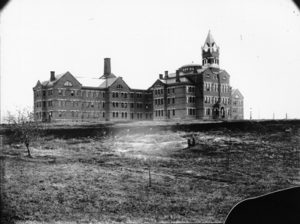
Southwestern Lunatic Asylum, early 1890s, courtesy East Tennessee State University Department of Sociology and Anthropology
Superintendents of asylums considered food to be very important, both for patient health and for their morale. Many patients came to facilities somewhat malnourished or with some degree of sickness, and nourishing food was a primary means of restoring them to physical health. Even healthy patients enjoyed a good meal, and for many patients, meals afforded pleasant breaks in a long day. Superintendents liked to see patients working in asylum gardens: the work gave them exercise and fresh air, occupied their minds, and helped keep expenses down. Some asylum gardens produced surprising amounts of food, though not entirely (or even mostly) through patient labor. The Southwestern Lunatic Asylum, in 1887, produced the following:
— 400 bushels of turnips
— 4,524 ears of green corn
–12,000 heads of cabbage
— 1,102 dozen cucumbers
— 64.5 gallons of peas
These figures do not represent the total harvest from the garden, but do give an idea of its productivity. The superintendent making the report stated that ” . . . the [garden’s] yield is fair under the circumstances . . . . The crops were planted late, and the early part of the season was unfavorable. While the soil of the farm and garden are naturally good, it has been badly cultivated.” At the the end of fiscal year 1887, the facility had a capacity of 250 but only housed 139 patients.
______________________________________________________________________________________
Colored Asylums
In comparison with whites, few African-Americans were sent to insane asylums. Some asylums did not want to accept black patients at all, while others put black patients in separate wards. Some states created separate asylums entirely for the “colored insane,” apparently subscribing to influential alienist Thomas Kirkbride’s view that “colors and classes” should not be mixed in insane asylums.
The West Virginia Hospital for the Insane was fairly typical. Its board of directors recognized the need to provide care for “colored” patients, yet didn’t feel the asylum could accept them until it had room to separate the races. The asylum did begin to accept black patients sometime in the late 1880s, placing them in separate wards from whites. In 1893, the board of directors asked for $6,000 to build a colored hospital. Shamefully, this request was made even though the asylum only had 44 colored patients. In 1900, when the asylum housed 1,001 patients, only 68 of them were African-American.
_____________________________________________________________________________________________
Asylum Showcases
Superintendents and staff were proud of their facilities and generally welcomed the public. Often, model patients would be allowed to congregate around visiting areas so that visitors would get a positive impression of the facility. The best wards were usually the easiest to get to, for the same reason. What were often called “back wards” were for the more difficult patients, and casual visitors seldom went there. These policies usually worked, and most visitors were favorably impressed. When Charles Dickens visited Boston Lunatic Hospital in 1842, he said:
“Every patient in this asylum sits down to dinner every day with a knife and fork; and in the midst of them sits the gentleman whose manner of dealing with his charges I have just described. At every meal, moral influence alone restrains the more violent among them from cutting the throats of the rest.”
It is not likely that this calmness prevailed throughout the building or at all meals, but the asylum certainly looked good at first glance.
________________________________________________________________________

